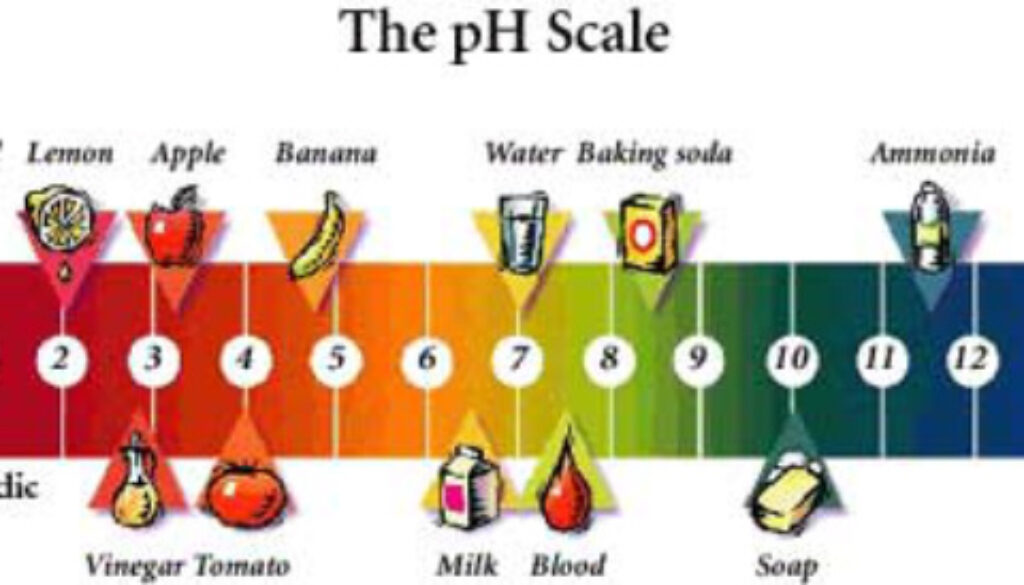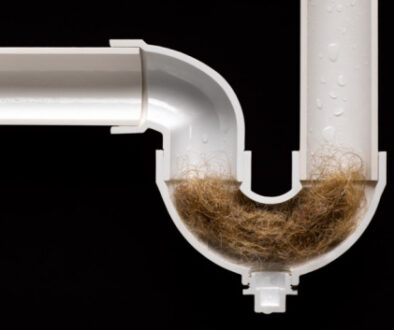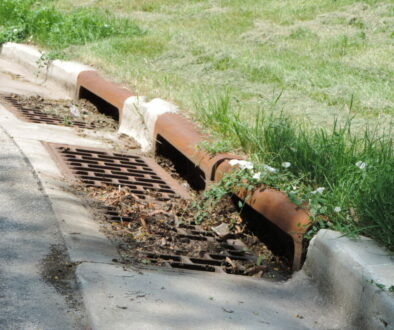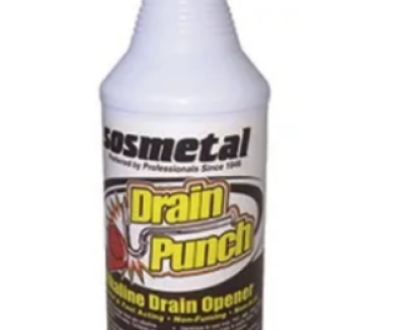What Is The Ph Of Drain Cleaner
Welcome! Let’s dive into the world of drain cleaners and uncover the pH secrets behind them. Have you ever wondered what makes drain cleaner so powerful at unclogging pipes? Well, it all comes down to the pH level of these cleaning solutions.
So, what exactly is pH? pH is a measure of how acidic or basic a substance is. On the pH scale, which ranges from 0 to 14, substances with a pH below 7 are considered acidic, while those above 7 are considered basic. The closer a substance is to either end of the scale, the stronger its acidity or basicity.
Now, you might be thinking, “What is the pH of drain cleaner?” Drain cleaners are typically highly alkaline, with a pH level of around 13 or 14. This extreme alkalinity helps break down organic materials like hair, grease, and food particles that can clog drains.
So, why is pH important when it comes to drain cleaning? Well, the high pH of drain cleaners allows them to react with and dissolve substances that are normally insoluble in water, making them highly effective at clearing clogs. However, it’s crucial to handle these cleaners with care, as their strong alkaline nature can cause skin and eye irritation.
Now that we know about the pH of drain cleaner and its role in unclogging drains, let’s explore this topic further and discover the different types and uses of drain cleaners. Get ready, because this journey will leave you with a wealth of knowledge about cleaning those stubborn clogs!
When it comes to drain cleaner, understanding its pH is important. The pH of drain cleaner can vary depending on the type and brand. Generally, drain cleaners have a pH of around 11-14, making them highly alkaline. This high pH helps break down organic materials, allowing for effective unclogging of drains. However, it’s important to handle drain cleaner with caution and follow the instructions provided by the manufacturer to ensure safety and proper usage.
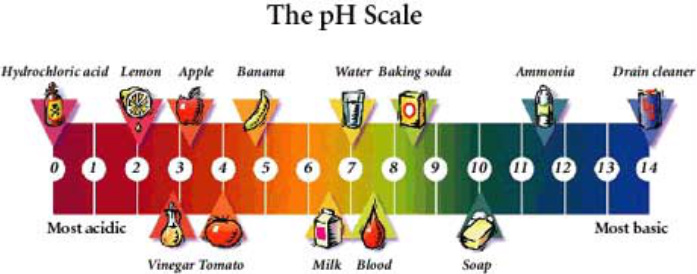
What is the pH of Drain Cleaner: A Deep Dive into Acidic Cleaning Solutions
Drain cleaners are powerful chemical solutions designed to unclog blocked drains and keep them free from debris and buildup. But have you ever wondered what gives these cleaning agents their potency? One critical factor in drain cleaner effectiveness is the pH level. pH is a measure of how acidic or alkaline a substance is on a scale of 0 to 14. In this article, we will explore the pH of drain cleaners, how it affects their cleaning performance, and the potential risks associated with using highly acidic solutions.
The Importance of pH in Drain Cleaners
When faced with a stubborn clog, the pH level of a drain cleaner determines its ability to dissolve and break down the blockage effectively. Most drain cleaners fall into two categories: acidic and alkaline. Acidic drain cleaners have a pH below 7, while alkaline drain cleaners have a pH above 7. The pH level directly affects how these cleaners interact with the substances causing the blockage.
Acidic drain cleaners, with their low pH, are particularly effective at breaking down organic materials like hair, grease, and food particles. The acidic nature of these cleaners helps to dissolve these substances at a molecular level, allowing them to flow effortlessly down the drain. On the other hand, alkaline drain cleaners, with their high pH, are more suited for breaking down mineral deposits such as limescale and rust.
It’s important to note that the pH of a drain cleaner doesn’t dictate its overall effectiveness. Other factors like the concentration of active ingredients and the specific formulation play a significant role in determining how well a drain cleaner can remove clogs.
The pH Scale and Drain Cleaners
The pH scale is a logarithmic scale ranging from 0 to 14. A pH of 7 is considered neutral, while pH levels below 7 are acidic, and those above 7 are alkaline. Drain cleaners often have pH levels that range from highly acidic to highly alkaline, depending on their intended use. Understanding the pH scale and its implications for drain cleaners can help you choose the right cleaner for your specific needs.
Acidic drain cleaners typically fall in the lower range of the pH scale. These cleaners can have a pH of 1 to 3, making them highly acidic. They are designed to quickly break down blockages caused by organic matter like hair, soap scum, and grease. The high acidity allows them to dissolve these substances, restoring the free flow of water through the drain.
Alkaline drain cleaners, on the other hand, fall in the higher range of the pH scale, often between 10 and 14. Their high alkalinity enables them to tackle mineral-based blockages like limescale, rust, and soap residue. These cleaners can effectively dissolve and break down these substances, allowing water to flow freely once again.
Potential Risks of Using Highly Acidic Drain Cleaners
While highly acidic drain cleaners can be effective in breaking down organic clogs, they can also pose risks if not used correctly. The corrosive nature of these cleaners makes them capable of damaging pipes, especially if used improperly or in excessive amounts. It is crucial to follow the manufacturer’s instructions and take necessary safety precautions when using acidic drain cleaners.
Additionally, the high acidity of these cleaners can be harmful to human health. Direct contact with the skin or eyes can cause burns and irritation. Inhaling the fumes from highly acidic drain cleaners can also be harmful, leading to respiratory problems and discomfort. It is important to wear protective clothing, gloves, and goggles when handling these cleaners and to ensure proper ventilation in the area.
It’s always a good idea to consider alternative methods or consult a professional plumber if you are unsure about using highly acidic drain cleaners. They can provide guidance on suitable alternatives that are safer for both your plumbing and your health.
Conclusion
The pH level of drain cleaners plays a vital role in their ability to dissolve and remove clogs effectively. Acidic drain cleaners with low pH are designed to break down organic materials like hair and grease, while alkaline drain cleaners with high pH are more effective against mineral-based deposits. However, it is essential to use caution when handling highly acidic drain cleaners, as they can potentially damage pipes and pose risks to human health. Always follow instructions and consider safer alternatives when in doubt.
Key Takeaways: What is the pH of Drain Cleaner?
- Drain cleaners have a high pH level, usually ranging from 10 to 14.
- The high pH helps drain cleaners break down organic materials and unclog drains effectively.
- Some drain cleaners contain ingredients like sodium hydroxide or sulfuric acid, which contribute to their high pH.
- It is important to follow safety precautions when using drain cleaners due to their strong alkaline or acidic nature.
- Always read the instructions carefully before using drain cleaners and consider using gentle alternatives for minor clogs.
Frequently Asked Questions
Welcome to our FAQ section on drain cleaners! Here, we will answer some commonly asked questions regarding the pH of drain cleaners. Whether you’re dealing with a clogged drain or are simply curious about the chemistry behind these powerful cleaning agents, we’ve got you covered. Read on to find out more!
1. How does the pH level of drain cleaners affect their effectiveness?
The pH level of a drain cleaner plays a significant role in determining its effectiveness. Drain cleaners with a high pH level, typically above 12, are more alkaline and work by breaking down organic materials, such as hair, grease, and soap scum, in the drain. The high alkalinity helps dissolve these materials and clear the clog.
On the other hand, drain cleaners with a low pH level, usually below 7, are more acidic and can dissolve mineral deposits, such as limescale and rust. However, acidic drain cleaners are not suitable for all types of clogs and may damage certain types of pipes. It’s important to choose a drain cleaner with the appropriate pH level for your specific needs.
2. What is the pH range of most common drain cleaners?
Most common drain cleaners have a high pH level, typically ranging from 12 to 14. As mentioned earlier, this high alkalinity helps break down organic materials in the drain and clear clogs. These drain cleaners are effective for tackling issues caused by hair, grease, and soap scum.
It’s important to note that not all drain cleaners are the same, and their pH levels can vary. Some drain cleaners may have a pH level slightly lower or higher than the common range. Always check the product label or consult the manufacturer for specific information on the pH level of the drain cleaner you are using.
3. Can the pH level of a drain cleaner cause any harm?
The pH level of a drain cleaner can indeed cause harm if not used correctly. While highly alkaline drain cleaners can effectively break down organic materials, they can also be corrosive and cause damage to certain types of pipes, such as PVC or rubber. It’s important to follow the instructions provided by the manufacturer and use the drain cleaner as directed.
Additionally, acidic drain cleaners with a low pH level can also be corrosive and cause damage to pipes if not used appropriately or on the right type of clog. It’s crucial to understand the type of clog and the compatibility of the drain cleaner with the plumbing system to avoid any harm or damage.
4. Are there any alternatives to using drain cleaners with high pH levels?
Absolutely! If you prefer to avoid drain cleaners with high pH levels, there are alternative methods for unclogging drains. One common method is using a mixture of baking soda and vinegar. Simply pour baking soda into the drain, followed by vinegar, and let it sit for some time before flushing it with hot water.
Natural enzyme-based drain cleaners are also available in stores, which use non-corrosive enzymes to break down organic matter in drains. These can be a safer and environmentally friendly alternative to traditional drain cleaners with high pH levels. However, keep in mind that their effectiveness may vary depending on the type and severity of the clog.
5. Can the pH level of a drain cleaner affect the environment?
The pH level of a drain cleaner can have an impact on the environment. Highly alkaline drain cleaners, if not disposed of properly, can be harmful to aquatic life and water sources. It’s important to follow the manufacturer’s instructions on how to dispose of the drain cleaner safely, and in some cases, contact your local waste disposal facility for guidance.
Using natural enzyme-based drain cleaners can be a more environmentally friendly option, as they are designed to biodegrade and have minimal impact on the ecosystem. However, it’s still crucial to use them responsibly and follow recommended disposal methods.
Summary
Drain cleaner is a strong chemical used to unclog pipes and drains in our homes. It works by breaking down blockages and clearing the way for water to flow freely again. This powerful cleaning agent has a pH level that can range from highly acidic to highly alkaline. The pH level determines how acidic or basic a substance is. Acidic drain cleaners have a low pH, while alkaline drain cleaners have a high pH. It’s important to know the pH level of drain cleaners because it can affect their effectiveness and safety. Acidic drain cleaners are better for dissolving organic materials like hair and grease, while alkaline drain cleaners are more effective against inorganic blockages like mineral deposits. However, both types of drain cleaners can be dangerous if not used correctly, so it’s important to follow the instructions and take all the necessary precautions when using them.
In conclusion, drain cleaners are powerful chemicals that can help us keep our drains clean and clear. They are available in acidic and alkaline forms, each with its own advantages and disadvantages. Remember to always handle drain cleaners with care and follow the instructions to ensure both effectiveness and safety.

